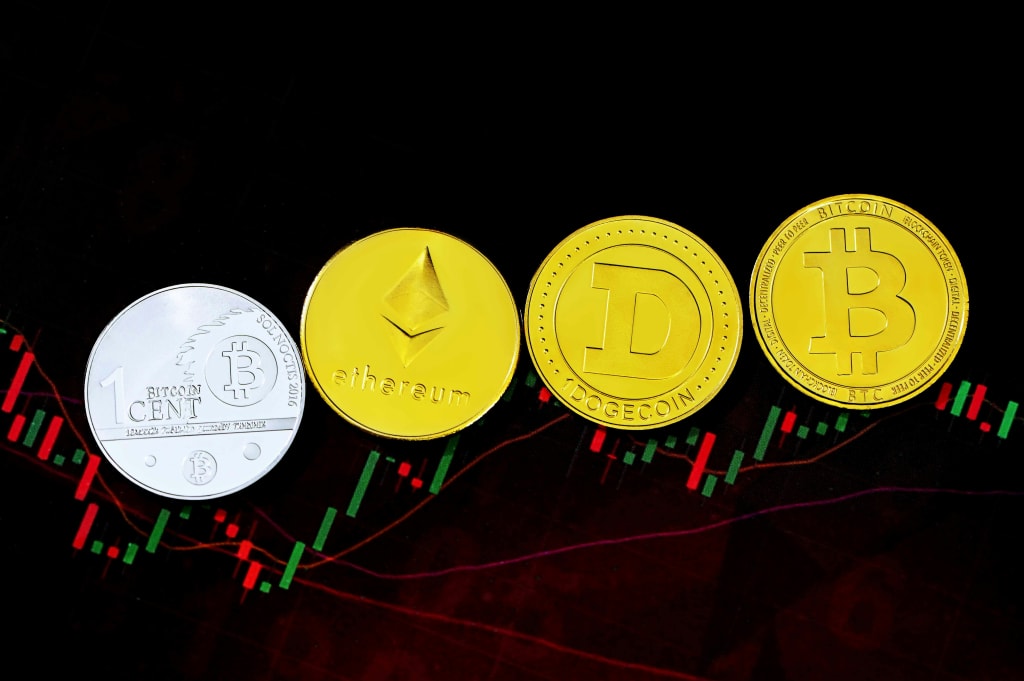
Table of Contents
- The Foundation for a Bull Run
- Institutional Adoption as a Catalyst
- Macroeconomic Factors at Play
- Technical Analysis and Historical Patterns
- The Role of Technological Advancements
- Challenges and Potential Obstacles
- The Path to $150,000
- Historical Context and Growth Patterns
- The Impact of Global Economic Shifts
- The Role of Corporate Adoption
- Technological Advancements and Ecosystem Growth
- Conclusion: A Balanced Perspective
In the ever-evolving landscape of cryptocurrency, Bitcoin continues to captivate investors and analysts alike with its potential for explosive growth. Recent market trends and expert predictions have sparked discussions about the possibility of Bitcoin reaching an unprecedented $150,000 by 2025. This forecast, while ambitious, is rooted in a combination of historical patterns, current market dynamics, and macroeconomic factors that could propel the world's leading cryptocurrency to new heights.
The Foundation for a Bull Run
Bitcoin's journey has been marked by cycles of dramatic growth followed by significant corrections. These cycles, often coinciding with the Bitcoin halving events that occur approximately every four years, have historically preceded substantial price increases. The next halving, expected in 2024, has led many analysts to anticipate another bull run in the cryptocurrency's price.
One prominent crypto analyst, Dr. Julian Hosp, has put forward a compelling case for Bitcoin's potential surge to $150,000. Hosp's analysis is based on a comprehensive examination of Bitcoin's past performance, global economic trends, and the increasing institutional adoption of cryptocurrencies. He argues that the convergence of these factors creates a unique environment conducive to Bitcoin's exponential growth.
Institutional Adoption as a Catalyst
A key driver behind the bullish prediction is the growing institutional interest in Bitcoin. Major corporations and financial institutions have begun to view Bitcoin as a legitimate asset class, with some even adding it to their balance sheets as a hedge against inflation. This shift in perception has brought a new level of credibility to the cryptocurrency market and has the potential to drive significant capital inflows.
The approval of Bitcoin ETFs in various countries has further legitimized Bitcoin as an investment vehicle, making it more accessible to a broader range of investors. This increased accessibility, combined with the growing recognition of Bitcoin's potential as a store of value, could fuel demand and drive prices upward.
Macroeconomic Factors at Play
The global economic landscape plays a crucial role in Bitcoin's potential ascent. Concerns about inflation and the devaluation of fiat currencies have led many investors to seek alternative stores of value. Bitcoin, with its fixed supply and decentralized nature, has emerged as an attractive option for those looking to protect their wealth from economic uncertainties.
Furthermore, the ongoing expansion of the global money supply by central banks could inadvertently boost Bitcoin's appeal. As governments continue to implement quantitative easing measures and maintain low interest rates, the relative scarcity of Bitcoin becomes more pronounced, potentially driving up its value.
Technical Analysis and Historical Patterns
Technical analysts have identified several patterns in Bitcoin's price history that support the possibility of a surge to $150,000. The formation of long-term support levels and the breaking of key resistance points have been cited as indicators of a potential bull run. Additionally, the stock-to-flow model, which has been relatively accurate in predicting Bitcoin's price movements in the past, suggests that a significant price increase is possible in the coming years.
The Role of Technological Advancements
The continuous development of Bitcoin's underlying technology and the broader cryptocurrency ecosystem could also contribute to its price appreciation. Improvements in scalability, security, and user experience make Bitcoin more attractive to both individual and institutional investors. The growing adoption of Lightning Network, a second-layer solution designed to make Bitcoin transactions faster and cheaper, could significantly enhance Bitcoin's utility as a medium of exchange.
Challenges and Potential Obstacles
While the outlook for Bitcoin appears promising, it's important to acknowledge the potential challenges that could impede its growth. Regulatory uncertainties remain a significant concern, as governments around the world grapple with how to approach cryptocurrencies. Adverse regulatory actions could potentially dampen enthusiasm and slow adoption rates.
Additionally, the emergence of central bank digital currencies (CBDCs) and improvements in traditional financial systems could pose competition to Bitcoin's value proposition. However, proponents argue that these developments might actually highlight Bitcoin's unique attributes and reinforce its position as a decentralized alternative to government-controlled currencies.
The Path to $150,000
The journey to $150,000 is not expected to be linear. Bitcoin's notorious volatility means that significant price swings are likely along the way. However, if the bullish predictions hold true, the overall trend could be upward, with each cycle potentially reaching new highs.
Investors and analysts will be closely watching key indicators such as trading volume, market sentiment, and on-chain metrics to gauge the strength of Bitcoin's momentum. The interplay between these factors and broader economic conditions will likely shape Bitcoin's trajectory towards the ambitious $150,000 target.
Historical Context and Growth Patterns
To fully appreciate the potential for Bitcoin to reach $150,000, it's crucial to consider its historical growth patterns. Since its inception in 2009, Bitcoin has experienced several significant bull runs, each outpacing the last in terms of both price and market capitalization.
In 2011, Bitcoin saw its first major price surge, rising from less than $1 to over $30. The 2013 bull run took the price from around $13 to over $1,000. The most dramatic increase came in 2017 when Bitcoin skyrocketed from about $1,000 to nearly $20,000. Most recently, in 2021, Bitcoin reached an all-time high of almost $69,000.
These historical surges demonstrate Bitcoin's potential for exponential growth. Each cycle has been characterized by increased adoption, technological improvements, and growing mainstream acceptance. The pattern suggests that future cycles could potentially drive the price even higher, lending credence to the $150,000 prediction.
The Impact of Global Economic Shifts
The global economic landscape is undergoing significant changes, with many countries facing unprecedented challenges. The COVID-19 pandemic has accelerated trends towards digitalization and prompted governments to implement expansionary monetary policies. These factors have created an environment that could be particularly favorable for Bitcoin's growth.
As traditional safe-haven assets like gold face competition from digital alternatives, Bitcoin's position as "digital gold" could be strengthened. Its fixed supply of 21 million coins contrasts sharply with the inflationary tendencies of fiat currencies, making it an attractive option for investors seeking to preserve wealth in uncertain times.
The Role of Corporate Adoption
Corporate adoption of Bitcoin has been a game-changer in recent years. Companies like MicroStrategy, Tesla, and Square have added Bitcoin to their balance sheets, signaling a shift in corporate treasury management strategies. This trend, if continued and expanded, could significantly impact Bitcoin's demand and, consequently, its price.
The involvement of major payment processors and financial services companies in the cryptocurrency space also bodes well for Bitcoin's future. PayPal, Visa, and Mastercard have all made moves to integrate cryptocurrency services, potentially exposing millions of users to Bitcoin and other digital assets.
Technological Advancements and Ecosystem Growth
The Bitcoin ecosystem continues to evolve and expand. Layer 2 solutions like the Lightning Network are addressing scalability issues, potentially enabling Bitcoin to handle a much higher volume of transactions. These technological advancements could make Bitcoin more viable for everyday transactions, further driving adoption and value.
Moreover, the growth of decentralized finance (DeFi) and the emergence of Bitcoin-based DeFi protocols could unlock new use cases for Bitcoin, enhancing its utility beyond a store of value or medium of exchange.
Conclusion: A Balanced Perspective
While the potential for Bitcoin to reach $150,000 is exciting, it's important to approach such predictions with a balanced perspective. The cryptocurrency market is known for its volatility, and past performance does not guarantee future results.
Investors should conduct thorough research, consider their risk tolerance, and potentially consult with financial advisors before making investment decisions. The path to $150,000, if realized, is likely to be fraught with volatility, regulatory challenges, and technological hurdles.
Nevertheless, the convergence of factors such as institutional adoption, macroeconomic trends, technological advancements, and historical growth patterns presents a compelling case for Bitcoin's continued appreciation. As the crypto industry matures and Bitcoin cements its place in the global financial ecosystem, the possibility of reaching new all-time highs, including the ambitious $150,000 target, remains an intriguing prospect for investors and enthusiasts alike.
What do you think? Follow us on X and let us know!

Andrew Carter is a seasoned crypto analyst with a keen eye for market trends and investment opportunities. With over a decade of experience in the finance and technology sectors, Andrew has become a prominent figure in the cryptocurrency space.

